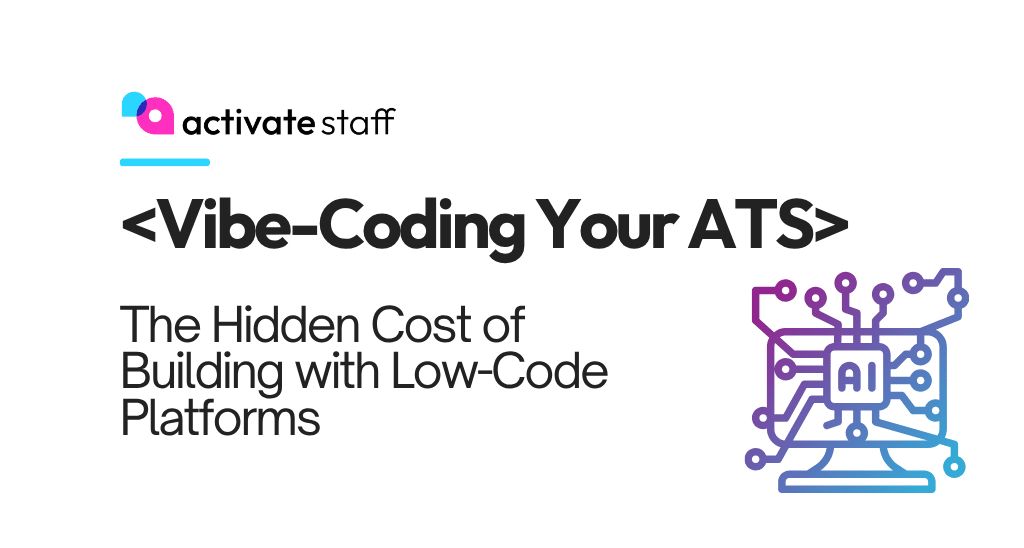The past few years of worldwide disruption caused by the pandemic led to a remarkable and rapid increase in demand for healthcare workers. Digital transformation was soon seen as inevitable for the staffing industry.
Our team recently attended the Staffing Industry Analysts Collaboration in the Gig Economy (“GigE”) conference where leaders from all over the staffing and technology industries came together to share their thoughts and innovations. One of the many major topics discussed was the growth of on-demand healthcare staffing platforms and the influence that it’s had all over the industry. The early-adopting agencies were able to look back at their experience and share what they’ve learned.
Missed the conference? Here are our five big takeaways to bring back to your agency:
Embrace the technology, it’s not going away
For employees in all industries, proven time and time again, technology has helped the workforce be more productive, efficient, and do more in less time. While much of the staffing industry has been reluctant to embrace the advancement of technology in the workplace, it’s shown to have clear possibilities for success. The adoption of on-demand staffing platforms in the healthcare industry has been a clear example of that triumph.
“The platforms are here; they’re here to stay,” Tony Braswell, the founder and president of Gale Healthcare Solutions proclaimed. “It’s really no different from Blockbuster and Netflix. You need to embrace the platform.”

Invest in multichannel engagement
Candidates want to have a multitude of options made available to them to communicate with their recruiters. Why? Because it’s not a one-size-fits-all situation. Sometimes face-to-face engagement is suitable depending on the situation and the needs of the candidate. Other times a quick text message will suffice. In a world where on-demand apps are readily found for all services and supply the ease and transparency we all enjoy, it only makes sense to have it as an option in staffing.
“We deliberately invest in having a breadth of services in our platforms,” shares Mike Barnard, the CEO of Acacium Group, the largest per diem staffing agency in the UK. The combination of digital and face-to-face engagement helps their nurses feel supported and meet them where they want to be. “It’s important to have a multichannel relationship with our nurses. Having a purely digital relationship is probably not quite right.”
Learn more about how agencies can appeal to more candidates.
Staffing platforms dominate the healthcare industry but they’re going to move over to other industries very fast
When on-demand staffing platforms arrived, it provided the much-needed fix to much of the healthcare industry’s pain-points. It was unmatched in its ability to help recruiters meet the high demand for nurses and rapidly changed the standard for agencies. One great example of this is Aya Healthcare, a primarily travel and allied healthcare staffing firm. After they launched their staffing app “MyAya” three years ago, they became the highest trafficked healthcare specific site on the internet. Today, they receive over 4 million job views and half a million self-submissions per month.
The disruption caused by the pandemic was only a trigger for the acceleration of adopting on-demand staffing platforms in healthcare – it won’t be long before other industries will find a way to utilize it to strengthen their team. “[Staffing apps] allow us to hire thousands of people a day, hundreds of people go to work a day. […] the platform is so efficient,” Tony Braswell said during the presentation.

Roles of internal staff are changing but the human aspect is here to stay
As should be expected, the internal roles in agencies are changing, but not in the way that you may think. Recruiters are not going anywhere but instead of spending hours hunting down talent, making outbound calls, and selling candidates on the job, they can utilize the efficiencies made possible by platforms to expedite the process. Recruiters are there to focus on candidates and clients, helping them to navigate the new position and offer their expertise to guide them.
New positions are also opening up to support the seamless end-to-end experience for candidates and clients. According to Mike Barnard, Acacium Group is investing heavily in data science and customer experience (CX). “It’s not about the platform, it’s about a frictionless service experience whether that’s for the worker or for the client.”
Data is a huge value add
From gathering real-time data and analytics to helping agencies gain a better understanding of how to improve key performance indicators (KPIs) and share that data with clients, staffing platforms can help agencies make informed decisions. They can understand what needs candidates have that haven’t been considered or insight into why certain jobs aren’t gathering interest or clicks. The CEO of StaffDNA, Sheldon Arora says technology is amazing because it helps recruiters ”have the right conversation, focus on the right problems.”

Staffing platforms are proving to be empowering tool for agencies, candidates and clients all around. “We’re in the human business, people need people. We need to have an infrastructure that supports those interactions,” imparts Sophia Morris, EVP of Client Fulfillment & Strategy Teams at Aya Healthcare. “Some people want to interact more frequently, some don’t. That’s okay, we meet people where [they’re] at.”
To learn more about the success of staffing platforms in the healthcare industry, download our case study below or book a meeting with a member of our team.
ActivateStaff team members attended Staffing Industry Analysts’ 2022 Collaboration in the Gig Economy conference. Staffing Industry Analysts (SIA) is the global advisor on staffing and workforce solutions. The company’s proprietary research covers all categories of employed and non-employed work including temporary staffing, independent contracting and other types of contingent labor. For more information on SIA, please visit the SIA website.”





